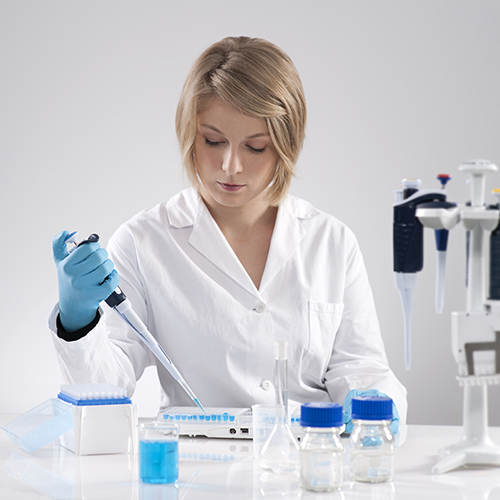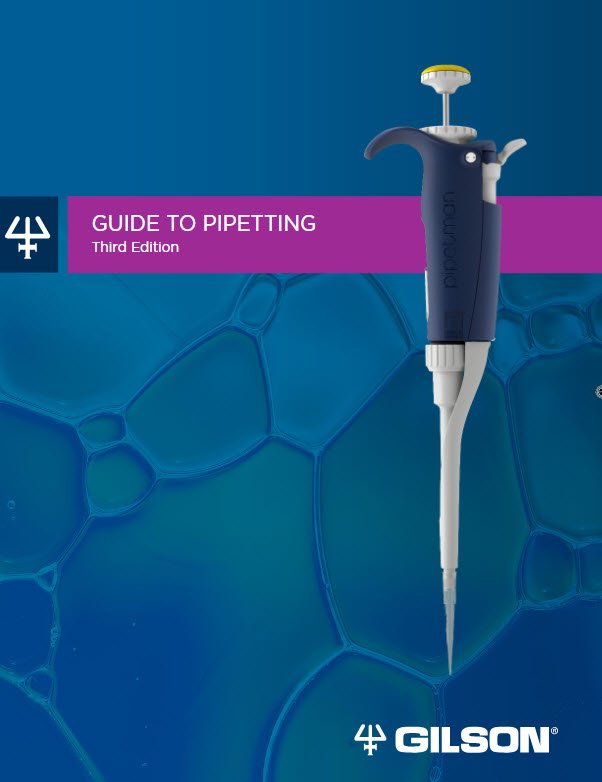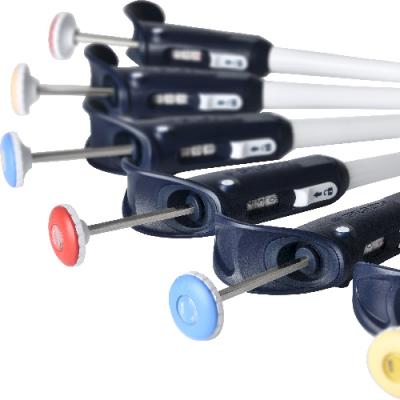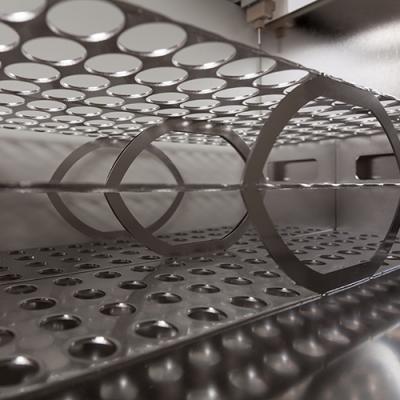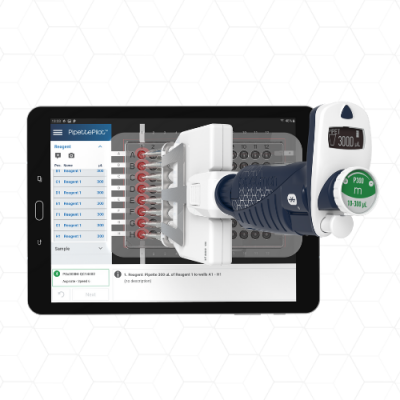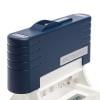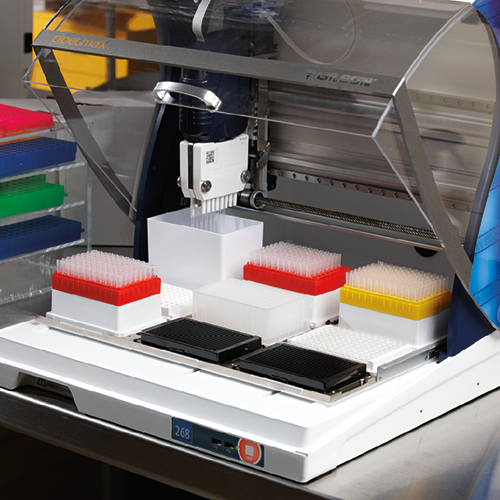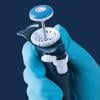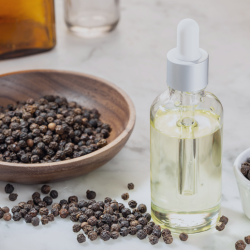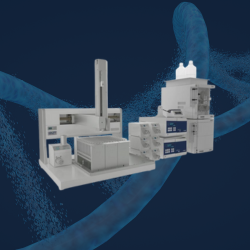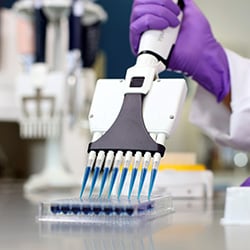If you are running sensitive experiments, reading pipette volume correctly will ensure success in your results. The best way to know you are reading your pipette volume correctly is to ensure that you are using precise, high-quality tools. This is a critical point for the accuracy of your results.
Steps to Ensure Pipette Volume Reading
There are techniques you can use to ensure that your readings are correct. To improve data collection in your experiments, consider what you need to know about pipette volume measurement.
1. Select the Right Pipette
The first step is selecting the correct pipette for the samples with which you will be working. For aqueous samples, you will use an air-displacement pipette.
For non-aqueous samples, you will select a positive-displacement pipette. Choose this pipette if working with viscous, dense, corrosive, radioactive, or volatile liquids.
Regardless of which pipette you choose, the same steps are followed:
- Set volume
- Prepare for aspiration
- Aspirate sample
- Dispense sample
Figure 1. A chart explaining the recommended types of pipettes for various substances
Along with the sample types, choosing the correct pipette will be determined by the analysis you need to perform and the volume to be handled.
It's recommended to select one with a nominal maximum capacity close to the size of the desired volume to avoid discrepancies when transferring between containers or vials.
2. Adjust the Volume
Next, to ensure the results of your findings, you will need to adjust the volume display by holding the body of your pipette in one hand and rotating the thumbwheel (for PIPETMAN L models, which have a volume-locking system) or pushing the button with the other hand.
To improve reproducibility and accuracy, use a clockwise turn method to finish setting the pipette:
- Slowly reach the required setting when decreasing volume (ensuring not to pass the mark)
- Pass the value by one-third of a turn to increase the volume setting, then decrease slowly to reach the volume (ensuring again not to pass the mark)
- Avoid parallax by holding the pipette in a horizontal position at eye level and adjusting until the indicator is aligned with the desired volume
3. Select and Affix the Correct Tip
To ensure accuracy, you will need to select and affix the right tip for the instrument you are using. For a PIPETMAN® single channel, hold the instrument in one hand, lower the pipette into the tip and use a slight twisting motion to set the tip firmly into place.
To fit the tip onto a multichannel PIPETMAN, avoid damaging your pipette by using Gilson's ROCKY RACK technique. Hammering or pounding on the tips is not recommended.
To fit a capillary piston (CP) tip, choose the MICROMAN® E. Its QuickSnap™ feature will make placing the tip as easy as using a regular air-displacement pipette.
When used with disposable CP tips, MICROMAN E positive displacement pipettes produce the highest level of precision when handling non-aqueous, viscous, or volatile liquids such as blood, syrup, oils, or glycerol.
4. Choose Your Pipetting Technique
For an air-displacement pipette, the forward mode is the standard method for pipetting with this instrument:
- Prepare: Hold pipette vertically and depress the plunger smoothly to the first stop position
- Aspirate: Immerse the pipette tip into the liquid, allow the plunger to move smoothly into the rest position, and wait one second to allow the fluid to move into the tip
- Dispense: Position the pipette at an angle against the inside wall of the vessel receiving the liquid and smoothly release the plunger into the first stop position
- Purge: Wait for a second, then depress the plunger into the second stop position (this purge stroke will remove any remaining sample from the tip) and remove the tip from the sidewall by sliding it upward against the wall
Another technique used with air-displacement pipettes is the reverse mode, sometimes used to pipette slightly viscous liquids. The purge stroke is used during preparation. During aspiration, an amount of liquid equal to the amount of purged air is added. This amount compensates for the liquid that remains inside the tip during dispensing. If you are using a new tip, move again to the purge step before ejecting the tip.
For positive-displacement forward mode pipetting, you will simply prepare, aspirate, and dispense.
Figure 2. Video - How to Select the Right Pipette
Pipette Maintenance Ensures Reliable Results
Pipettes are critical tools that require care to maintain. Ensuring that you know how to inspect your pipettes properly is essential for the quality of work done in experiments. We recommend taking care of them by:
- Checking pipettes daily for contaminates
- Storing your pipettes properly on a pipette stand
- When not in use, resetting your pipettes to the maximum volume for less pressure on the springs
Furthermore, if you suspect a defect is impacting your finding, you should refer to the product's User Guide and follow the manufacturer's recommendations. Use the PIPETMAN Quick Inspection guide to diagnose any defects.
This will help you determine whether the pipette needs repairs. This can be done on-site or through one of Gilson's service centers.
Pipette Performance Checks Influence Results
The accuracy and precision of analytical results are dependent on the performance of individual pipettes. Therefore, they must be compared regularly with manufacturer specifications. Gravimetric analysis of a pipette is an essential check that allows for accurate and precise testing.
The frequency with which you should check your pipettes depends on how often you use them and the environmental conditions of your lab. If you use a specific pipette regularly, you must check it three to four times a year. If you have pipettes that you do not use often, annual checks six months after your yearly calibration will suffice.
With a Gilson pipette and regular calibrations, you can always be confident in the accuracy of your results. However, it is necessary to check for any defects before conducting the gravimetric test.
Improve Your Accuracy with Proper Pipetting Techniques and Equipment
Be sure you use the proper techniques when measuring out fluids for experiments. With Gilson's pipettes, which offer a wide range of durable and reliable instruments, it is easy to measure liquids accurately.
Remember, using this kind of tool correctly not only saves wear and tear on lab equipment – but also results in more sound data, perfect for reproducible experimentation.
In addition to using the right technique, the best way to ensure reliable and accurate results is to reach for your Gilson PIPETMAN pipette. Our selection of laboratory instruments enables verifiable data collection and more productive research.
For more information or to share your techniques for measuring pipette volume correctly, contact us here at Gilson. We would love to hear from you!
Gilson’s Guide to Pipetting
Filled with tips from our pipetting experts, this free guide covers all aspects of pipetting, from pipette selection through maintenance.
LEARN MORE

















